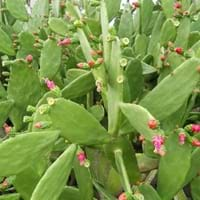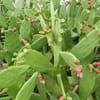Life Span
Perennial
Perennial
Type
Cactus or Succulent
Shrub
Origin
Mexico
North America, United States, Northeastern United States, Mid-Atlantic United States, Southeastern United States, Canada
Types
Not Available
Red chokeberry, Purple chokeberry
Habitat
Desert
Anthropogenic, Boggy areas, Cliffs, Fens, Swamps, Terrestrial, Wet lands, Woodlands
USDA Hardiness Zone
8-12
3-8
Sunset Zone
H1, H2, 8, 9, 12, 13, 14, 15, 16, 17, 18, 19, 20, 21, 22, 23, 24
A2, A3, 1a, 1b, 2a, 2b, 3a, 3b, 4, 5, 6, 7
Habit
Upright/Erect
Thicket/Colonizing
Flower Color
Yellow, Red, Orange
Not Available
Flower Color Modifier
Not Available
Not Available
Fruit Color
Reddish Plum
Purplish-black
Leaf Color in Spring
Green
Not Available
Leaf Color in Summer
Green
Not Available
Leaf Color in Fall
Green
Not Available
Leaf Color in Winter
Green
Not Available
Leaf Shape
Globe shaped
Elliptic
Plant Season
Spring, Summer, Fall, Winter
Spring, Summer, Fall
Sunlight
Full Sun, Partial Sun
Full Sun, Partial Sun, Partial shade
Growth Rate
Medium
Medium
Type of Soil
Loamy, Sandy, Well drained
Clay, Loam
The pH of Soil
Acidic, Neutral, Alkaline
Acidic, Neutral, Alkaline
Soil Drainage
Well drained
Average
Bloom Time
Spring, Late Spring, Early Summer
Late Spring, Early Summer
Tolerances
Drought, Salt
Not Available
Where to Plant?
Ground, Pot
Ground, Pot
How to Plant?
Grafting, Seedlings, Transplanting
Cuttings, Divison, Seedlings
Plant Maintenance
Medium
Medium
Watering Requirements
Does not require lot of watering, Water once every two or three weeks, Water when soil is dry
Average Water Needs, Do Not over Water, Requires regular watering
In Summer
Lots of watering
Lots of watering
In Spring
Moderate
Moderate
In Winter
Average Water
Average Water
Soil pH
Acidic, Neutral, Alkaline
Acidic, Neutral, Alkaline
Soil Type
Clay, Loam, Sand
Clay, Loam
Soil Drainage Capacity
Well drained
Average
Sun Exposure
Full Sun, Partial Sun
Full Sun, Partial Sun, Partial shade
Pruning
Prune if you want to improve plant shape, Prune ocassionally, Remove dead leaves
Prune after flowering, Remove branches that rub together, Remove damaged leaves, Remove dead branches, Remove dead leaves, Remove diseased branches by the tool's blades dipped into the alcohol solution
Fertilizers
All-Purpose Liquid Fertilizer
10-10-10, All-Purpose Liquid Fertilizer, Apply N-P-K
Pests and Diseases
Aphids, Caterpillars, Cochineal insect, Mealybugs, Nematodes, Red spider mite, Rodent, Root rot, Scale, Slugs, Snails, Thripes, Viruses, Worms
Red blotch
Plant Tolerance
Drought
Not Available
Flower Petal Number
Single
Not Available
Foliage Texture
Bold
Not Available
Foliage Sheen
Matte
Not Available
Invasive
Sometimes
Sometimes
Attracts
Aphids, Birds, Rodents
Not Available
Allergy
Not Available
Anaphylaxis
Aesthetic Uses
Cottage Garden, Showy Purposes
Showy Purposes
Beauty Benefits
Nourishes scalp, Reduce Bruises, Remove blemishes
Good for skin
Environmental Uses
Air purification
Air purification, Food for birds, Wildlife
Medicinal Uses
Antioxidants, Diabetes, Diarrhea, Hangover
anti-cancer, Antioxidants, Cold
Part of Plant Used
Flowers, Leaves
Fruits
Other Uses
Biomass for fuel, Employed in herbal medicine, Fine spines and trichomes are used as fiber for weaving, Oil is used for aromatherapy, Showy Purposes, Used As Food, Used as Ornamental plant, Used in construction, Used in Furniture
Pectin
Used As Indoor Plant
No
No
Used As Outdoor Plant
Yes
Yes
Garden Design
Container, Feature Plant, Fruit, Fruit Tree, Hedges, Houseplant, Mixed Border, Rock Garden, Wall
Foundation, Mixed Border
Botanical Name
OPUNTIA ficus-indica
ARONIA melanocarpa
Common Name
Indian fig opuntia, Barbary fig, cactus pear, spineless cactus
Black Chokeberry
In Hindi
Opuntia ficus-indica
Black Chokeberry Shrub
In German
Opuntia ficus-indica
Schwarz Aronia Strauch
In French
Opuntia ficus-indica
Noir Chokeberry Arbuste
In Spanish
Opuntia ficus-indica
Chokeberry negro Arbusto
In Greek
Φραγκοσυκιά
Μαύρο Chokeberry θάμνων
In Portuguese
Opuntia ficus-indica
Chokeberry preto Arbusto
In Polish
Opuntia ficus-indica
Krzew aronii
In Latin
Opuntia ficus-indica
Lichen Frutex
Phylum
Magnoliophyta
Magnoliophyta
Class
Magnoliopsida
Magnoliopsida
Order
Caryophyllales
Rosales
Family
Cactaceae
Rosaceae
Genus
Opuntia Mill
Aronia
Clade
Angiosperms, Eudicots
Angiosperms, Eudicots, Rosids
Subfamily
Opuntioideae
Amygdaloideae
Number of Species
Not Available
Not Available
Importance of Barbary Fig and Black Chokeberry
Want to have the most appropriate plant for your garden? You might want to know the importance of Barbary Fig and Black Chokeberry. Basically, these two plants vary in many aspects. Compare Barbary Fig and Black Chokeberry as they differ in many characteristics such as their life, care, benefits, facts, etc. Every gardener must at least have the slightest clue about the plants he wants to plant in his garden. Compare their benefits, which differ in many ways like facts and uses. The medicinal use of Barbary Fig is Antioxidants, Diabetes, Diarrhea and Hangover whereas of Black Chokeberry is anti-cancer, Antioxidants and Cold. Barbary Fig has beauty benefits as follows: Nourishes scalp, Reduce Bruises and Remove blemishes while Black Chokeberry has beauty benefits as follows: Nourishes scalp, Reduce Bruises and Remove blemishes.
Compare Facts of Barbary Fig vs Black Chokeberry
How to choose the best garden plant for your garden depending upon its facts? Here garden plant comparison will help you to solve this query. Compare the facts of Barbary Fig vs Black Chokeberry and know which one to choose. As garden plants have benefits and other uses, allergy is also a major drawback of plants for some people. Allergic reactions of Barbary Fig are Not Available whereas of Black Chokeberry have Anaphylaxis respectively. Having a fruit bearing plant in your garden can be a plus point of your garden. Barbary Fig has showy fruits and Black Chokeberry has showy fruits. Also Barbary Fig is not flowering and Black Chokeberry is flowering. You can compare Barbary Fig and Black Chokeberry facts and facts of other plants too.





